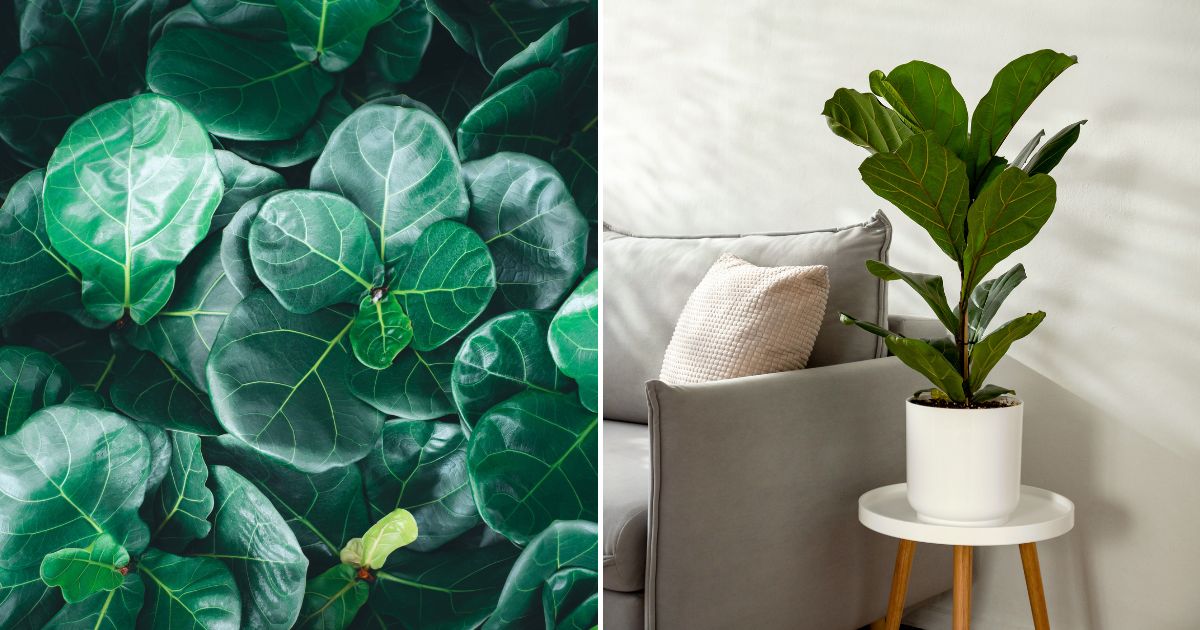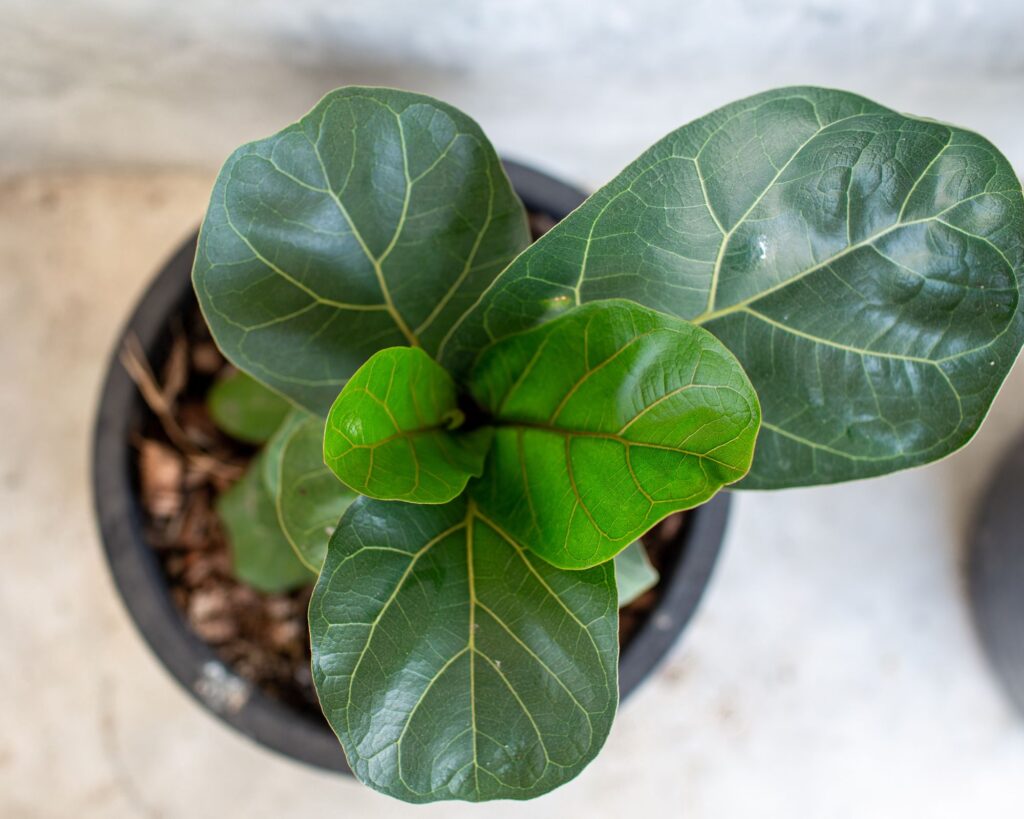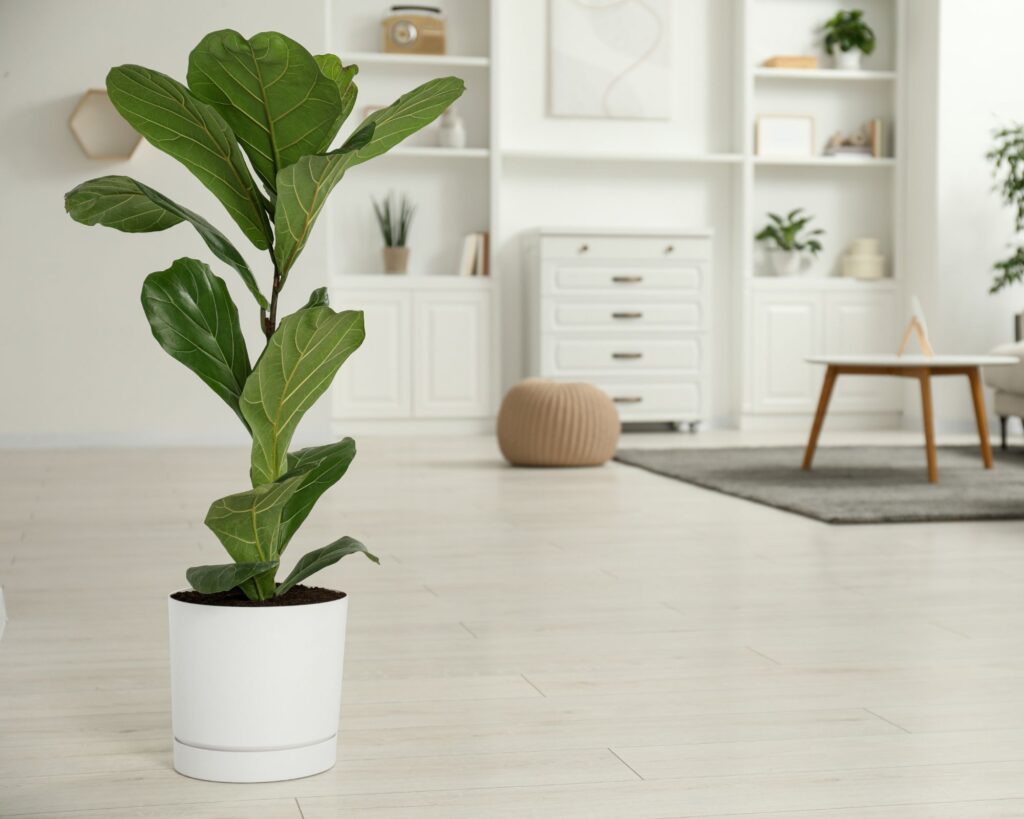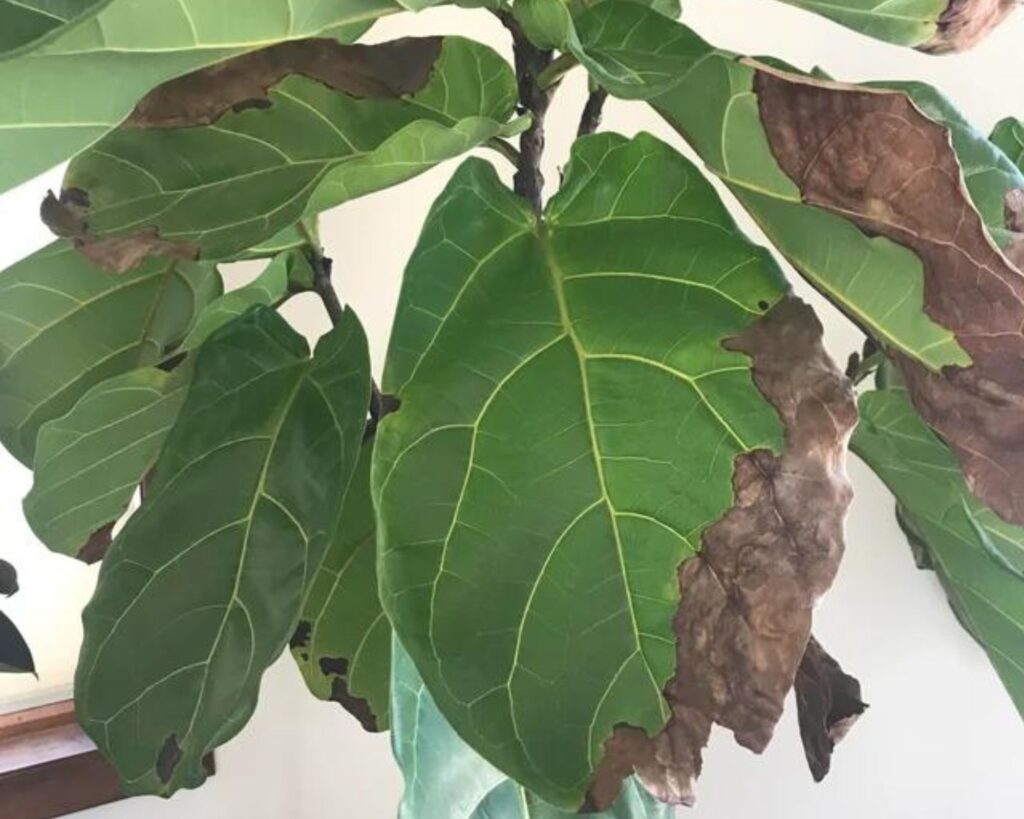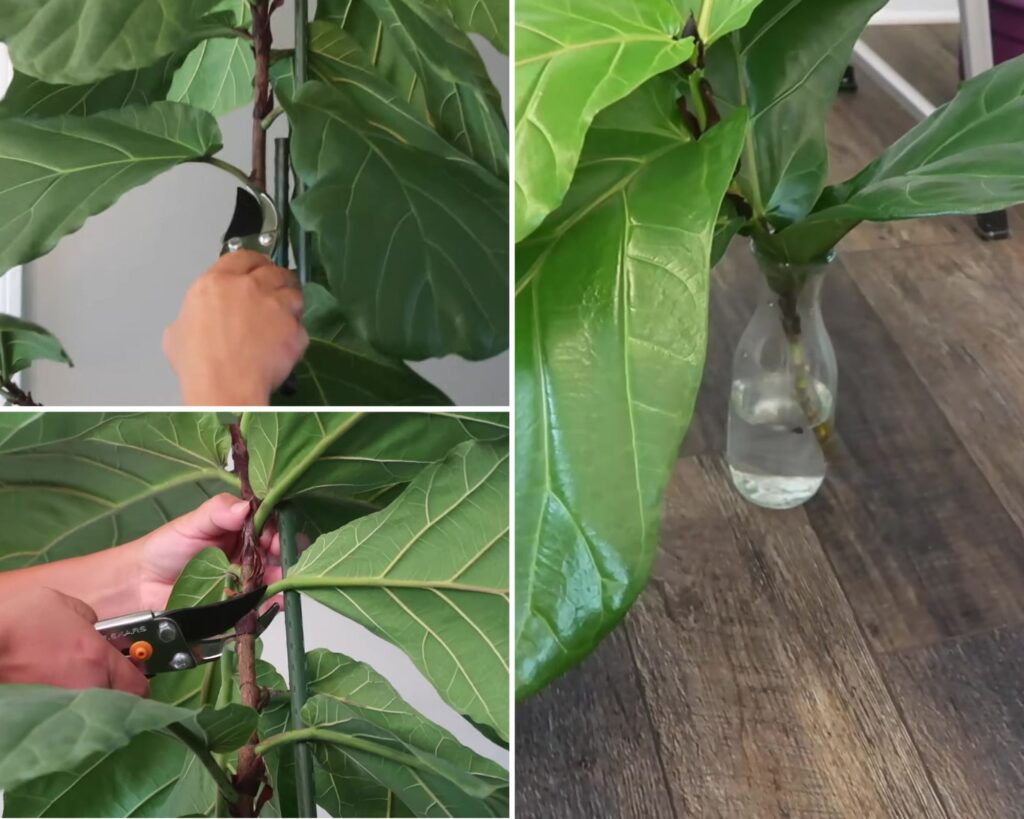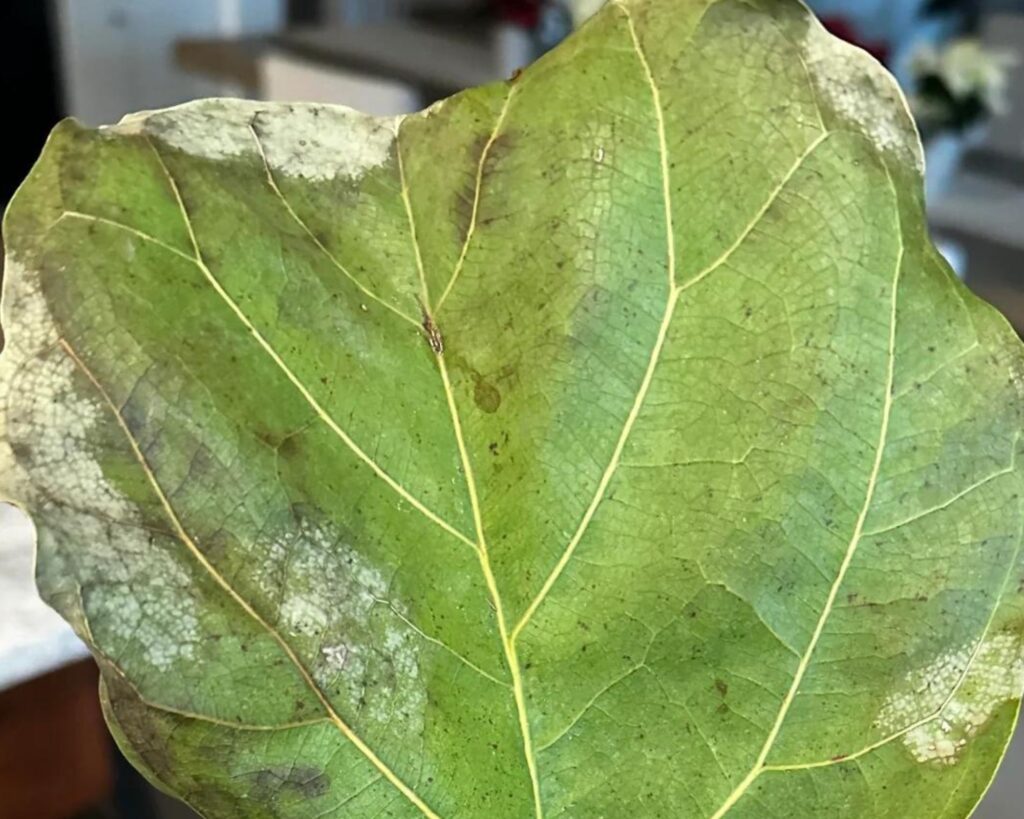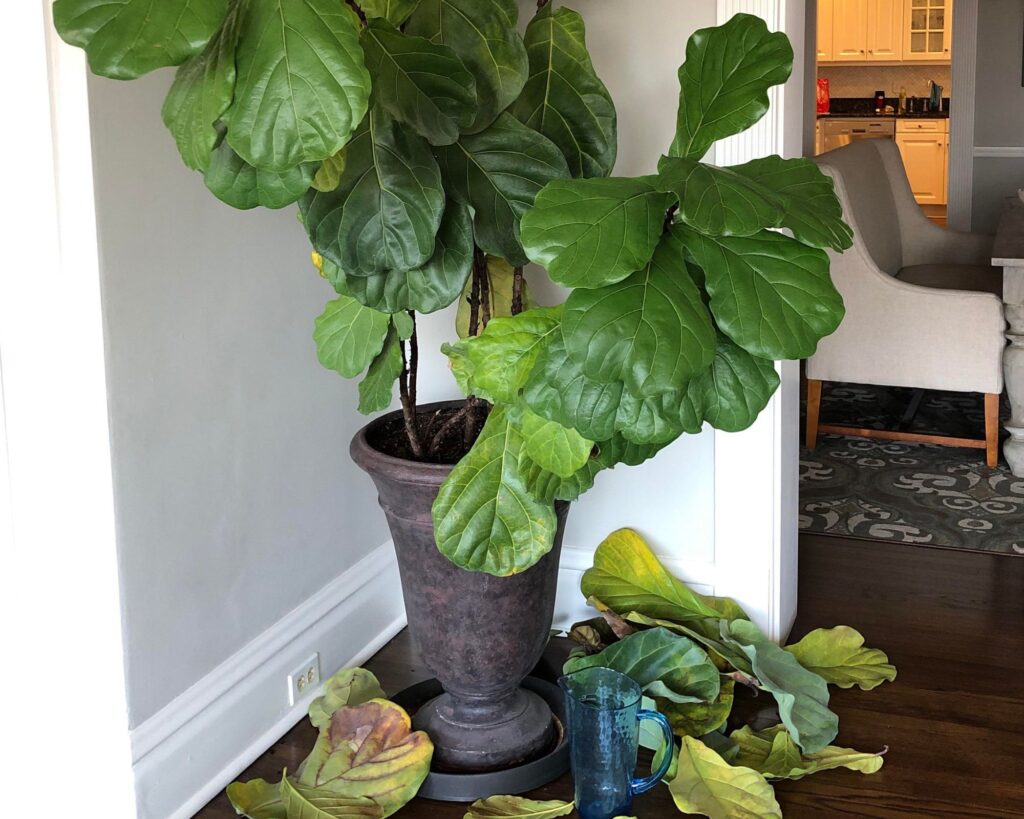Ever dreamed of creating an indoor jungle right in your living room? Fiddle Leaf Figs, with their impressive leaves and elegant structure, are a top pick for plant enthusiasts. But keeping them thriving requires more than just admiration.
Curious about how to give your Fiddle Leaf Fig the best care? Let’s explore the secrets of proper watering and essential maintenance together, ensuring your plant becomes a lush and vibrant focal point in your home.
Understanding the Fiddle Leaf Fig
The Fiddle Leaf Fig is a popular houseplant known for its stunning, large, violin-shaped leaves. To grow one successfully, you need to know both the species’ characteristics and its preferred environment.
Species Overview
The Ficus lyrata, commonly known as the Fiddle Leaf Fig, is native to western Africa. Standing out with its broad, glossy leaves, this plant can grow over six feet indoors under the right conditions.
Key features:
- Leaf Shape: Large, fiddle-shaped leaves.
- Growth Pattern: Can grow tall or bushy depending on pruning.
- Lifespan: With good care, it can live for many years.
Despite its beauty, the Fiddle Leaf Fig is known to be finicky. It responds strongly to changes in light, water, and environment, making consistent care essential.
Optimal Growing Conditions
For a healthy Fiddle Leaf Fig, place it in bright, indirect light. Direct sunlight can scorch its leaves, while too little light can stunt its growth. Ideally, aim for a location close to a south-facing window but not in the direct path of the sun.
Light Requirements:
- Preferred Light: Bright, indirect light.
- Avoid: Direct sunlight and full shade.
Watering needs also play a crucial role. Water your Fiddle Leaf Fig when the top inch of soil feels dry. Overwatering can lead to root rot, a common issue for this species.
Watering Tips:
- Frequency: Once a week or when top inch of soil is dry.
- Method: Thoroughly water until excess drains from the pot’s bottom.
By providing the right amount of light and water, you can enjoy a lush and vibrant Fiddle Leaf Fig in your home.
Proper Watering Techniques
Caring for a Fiddle Leaf Fig involves understanding its watering needs. Ensuring the right frequency, type of water, and recognizing signs of over or under-watering are crucial steps.
Watering Frequency
Fiddle Leaf Figs thrive with consistent watering schedules. Usually, watering every 7 to 10 days is best. Stick your finger about an inch into the soil to check moisture; if it feels dry, it’s time to water.
During the growing season (spring and summer), your plant may need water more frequently. In contrast, during the dormant months (fall and winter), less watering is typically required.
Best Water Types for Fiddle Leaf Figs
Using the correct water type helps avoid potential issues. Filtered or distilled water is ideal because it’s free of chlorine and fluoride, which can harm your plant.
Tap water can work if you let it sit out overnight to let chemicals dissipate. Avoid using softened water, which contains salts that can damage your Fiddle Leaf Fig.
Signs of Overwatering and Underwatering
Identifying the signs of overwatering and underwatering is essential. Yellowing leaves and a musty smell from the soil often indicate overwatering.
Conversely, brown edges on the leaves, slow growth, and wilting suggest underwatering. Checking these indicators helps you adjust your watering routine accordingly, ensuring your Fiddle Leaf Fig remains healthy.
Maintenance and Care
Effective maintenance and care of your Fiddle Leaf Fig ensure its health and longevity. Key aspects include pruning and trimming, managing dust on leaves, and understanding soil and repotting needs.
Pruning and Trimming
Regular pruning and trimming help your Fiddle Leaf Fig maintain its shape and encourage new growth. Use sharp, clean pruning shears to remove dead or damaged leaves. Trim leaves at the base where they connect to the stem. Avoid over-pruning, as this can stress the plant. If the tree becomes too tall, you can cut the top off to encourage bushier growth. Be cautious and make cuts just above a node, which is where new growth will emerge.
Dust Management on Leaves
Dusting the leaves of your Fiddle Leaf Fig is essential for optimal photosynthesis. Use a soft, damp cloth or a sponge to gently wipe the leaves. Avoid using harsh chemicals or leaf shine products, which can harm the plant. Dust builds up quickly, so aim to clean the leaves every few weeks. For larger plants, you can also use a shower or hose with gentle water pressure to wash off the dust. Clean leaves also reduce the risk of pests.
Soil and Repotting Essentials
High-quality soil and proper repotting are crucial for your Fiddle Leaf Fig’s health. Use a well-draining potting mix with ingredients like peat moss, perlite, and pine bark. Repot every 1-2 years or when the plant becomes root-bound. Choose a pot that is 2-4 inches larger in diameter than the current one. Ensure the new pot has drainage holes to prevent waterlogging. When repotting, gently loosen the root ball to encourage new root growth.
Maintain regular watering but avoid over-watering by allowing the top inch of soil to dry out between waterings. Using a moisture meter can help you be precise.
Fertilization and Nutrition
To keep your Fiddle Leaf Fig healthy and thriving, proper fertilization and nutrition are essential. Focus on choosing the right fertilizer and maintaining an appropriate feeding schedule.
Choosing the Right Fertilizer
Select a balanced, water-soluble fertilizer with an N-P-K ratio of 3-1-2. This ensures the plant receives the right mix of nitrogen, phosphorus, and potassium. Nitrogen promotes healthy leaf growth, phosphorus supports root development, and potassium strengthens overall structure.
Liquid fertilizers are convenient and easy to use. Look for products with added micronutrients like magnesium and calcium. These additional nutrients help prevent common deficiencies.
When applying fertilizer, dilute it to half the recommended strength. This reduces the risk of nutrient burn. Organic fertilizers like worm castings can also be beneficial. They release nutrients slowly and improve soil health over time.
Fertilization Schedule
Feed your Fiddle Leaf Fig during its growing season, typically from spring to early fall. During this period, fertilize every four weeks.
In winter, when growth slows, reduce feeding to every two to three months. Over-fertilizing in the dormant season can harm the plant.
Use a calendar or set reminders to help you stick to the schedule. Regular feeding supports vigorous growth and helps maintain vibrant, lush foliage.
Watch for signs of nutrient deficiency, such as yellowing leaves, and adjust your schedule or fertilizer strength accordingly. This proactive approach helps keep your Fiddle Leaf Fig in peak condition all year round.
Common Issues and Solutions
When caring for a Fiddle Leaf Fig, you might face issues like pests, diseases, and leaf drop. Addressing these problems promptly is key to maintaining a healthy plant.
Pest Prevention and Treatment
Common pests include spider mites, aphids, and mealybugs. Identify infestations early by checking the underside of the leaves. Remove pests using a damp cloth or neem oil solution.
For severe infestations, consider insecticidal soap. Regular monitoring prevents outbreaks. Keep the plant’s environment clean and dust leaves to decrease the risk.
Disease Management
Fungal infections and root rot are frequent issues.
Prevent root rot by ensuring proper drainage and avoiding overwatering. Dry, discolored leaves might indicate a fungal problem; remove affected leaves and treat the plant with a fungicide. Maintain good air circulation and avoid overhead watering to minimize disease risk.
Leaf Drop and Its Causes
Leaf drop can happen due to stress from changes in temperature, light, or watering habits. Ensure stable conditions by placing the plant away from drafts and direct sunlight.
Under or over-watering is a common cause; ensure you water thoroughly but let the soil dry out between watering sessions. Using a moisture meter helps maintain the right balance.
Maintaining a healthy Fiddle Leaf Fig requires a balance of proper watering, consistent care, and an understanding of its specific needs.
Ensuring the top inch of soil is dry before watering can prevent issues like root rot, while regular maintenance such as pruning, cleaning leaves, and rotating the plant can promote overall health.
Providing bright, indirect light, using the right type of water, and monitoring for signs of over or under-watering are all crucial steps.
With these straightforward tips, your Fiddle Leaf Fig can flourish, becoming a lush and vibrant centerpiece in your home, adding both beauty and a touch of nature to your living space.
